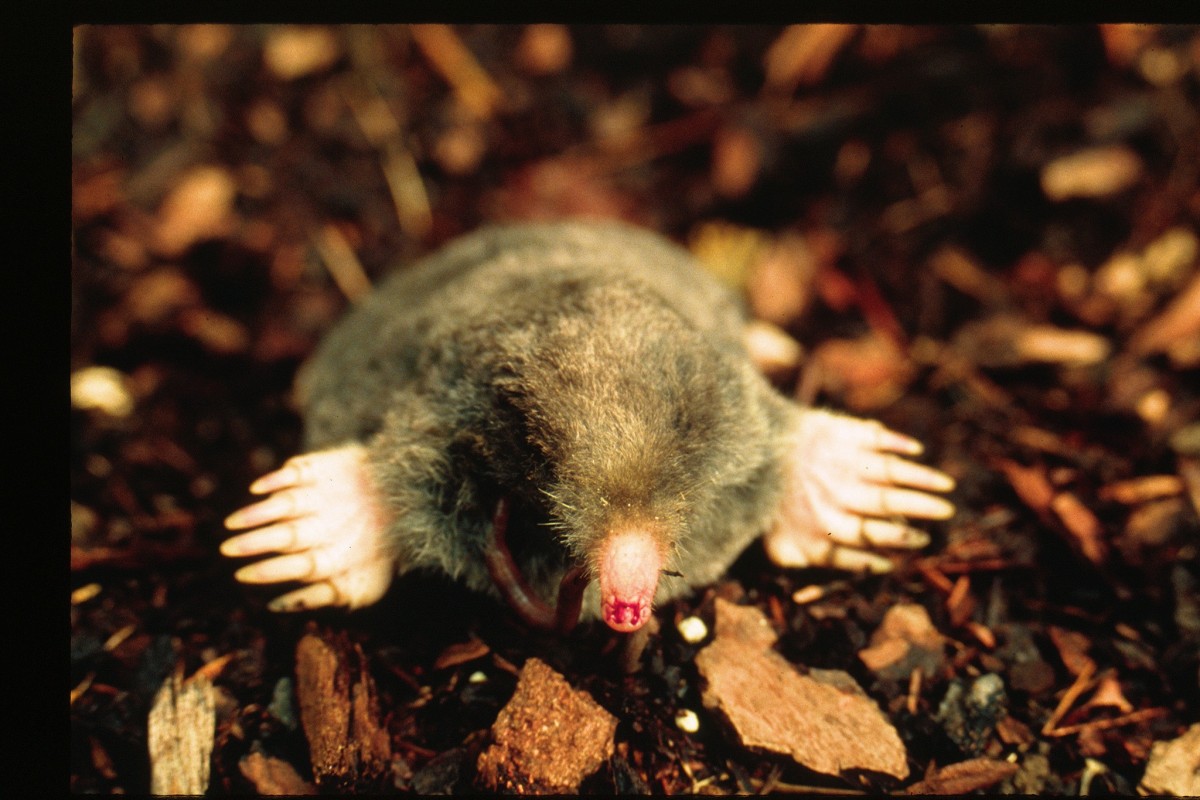
Coast mole. Pacific Northwest Power and Conservation Council photo.
Are you seeing mole damage in your lawn? We have good news and bad news.
The bad news: It is extremely difficult to permanently prevent or get rid of moles.
The good news: Moles are part of a healthy ecological system. If you have moles, it means you have rich, healthy soil, with beneficial insects and organisms like worms. Does that make you feel a little bit better?
Moles play an important ecological role. They eat worms, slugs and soil insects. They dig tunnels underground, which create channels for air and water to move through the soil.
But if you’re like most homeowners, you’d rather not have moles burrowing under your lawn or garden.
The problem is that the tunnels create weak spots and holes in a lawn. The moles also push mounds of soil to the surface. Moles rarely eat flower bulbs or roots, but can disturb plants while they are tunneling for insects.
What you can do
We think the best solution is to tolerate moles when possible, since they play such a beneficial role in your garden’s ecology.
Rake the mounds as soon as you notice them in the lawn. This will prevent the soil from killing the lawn. Rake the extra soil into the lawn to provide a light topdressing.
You may want to consider replacing part of your lawn with garden beds. This will attract birds and butterflies, while hiding the mole damage.
Traps are effective, but difficult to use correctly. Traps can be dangerous, so get and follow detailed instructions. Leg hold traps are illegal in Washington.
Castor oil and noisemakers have mixed results. Castor-oil repellents may help in the short term. Devices that make noise or vibrations may sometimes work. Flooding and fumigating rarely work, since nearby moles will move into the vacated tunnel.
You may want to install a physical barrier. If you know the moles are coming from a certain area, dig a trench and insert bamboo cloth or hardware cloth. The barrier should be at least 6-12 inches deep. This will protect the roots of young plants. Older trees and shrubs are usually not affected. Digging and installing a barrier can be labor-intensive.
Don’t use a pesticide that kills grubs or earthworms. The moles will return, their damage won’t disappear, and in the process you will kill earthworms that help your soil. Pesticides may also harm other wildlife, pets and children.
If you choose to use pesticides, pick a safer product. Look at product rankings in the Grow Smart, Grow Safe product tables. These tables rank pesticides for toxics to humans, pets, wildlife, aquatic life and water pollution.

I use traps, and the are very effective. Have caught 8 moles in 7 days.
Wow! That is a lot of moles! I’m glad the traps are effective. What kind of trap are you using?
I pot the soil they aerate and pile for me (and use it to pot plants), then rake it and top with woodchips. Most of my yard is garden and woodchips, so moles and I are friends.
Thanks for having a mole-friendly yard!